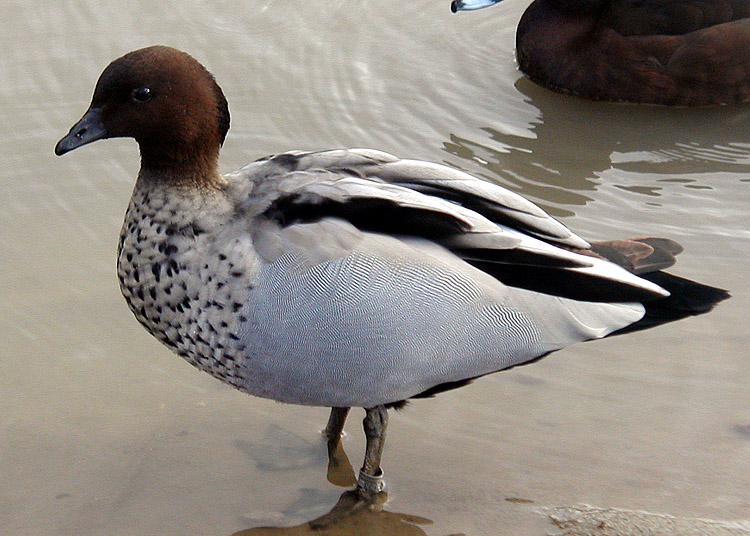
Australian wood duck, orManed duck, orManed goose(Chenonetta jubata)
Phylum —chordata
Class — aves
Order — anseriformes
Family — anatidae
Genus –chenonetta
Appearance
The male is grey with a dark brown head and mottled breast. The female has white stripes above and below the eye and mottled underparts. Both sexes have grey wings with black primaries and a white speculum. Juveniles are similar to adult females, but lighter and with a streakier breast.
Length – 44-51 cm, wingspan – 80 cm, weight: males – 815 g, females – 800 g.
Habitat
The Australian wood duck is an endemic Australian species, found most commonly along the southeast and eastern part of the continent and in Western Australia. During wet years, many birds move to central Australia to breed. Elsewhere in Australia it is a vagrant.
Behavior
Australian wood duck lives often in groups. This species feeds by grazing near water, and sometimes by dabbling. But it doesn’t swim very well, whereas it walks and runs easily.
During the day, Australian wood duck rests in flocks, perched on trees close water. They start to feed at dusk.
If threatened, Australian wood duck stays motionless, or disappears by walking or it takes off silently through the trees.
This species is usually sedentary, but some dispersion may be observed according to rainfalls and food resources such as grass.
Diet
The Australian wood duck eats grasses, clover and other herbs, and occasionally, insects.
Reproduction
Breeding season varies, according to rainfalls.
Australian wood duck nests in cavities in trees or in nest-boxes above or near water. Nests are made with a pile of down.
This duck nests in a tree cavity laying 9–11 cream-white eggs. The female incubates them while the male stands guard. Once the ducklings are ready to leave the nest, the female flies to the ground and the duckling will leap to the ground and follow their parents. The males also secure their ducklings closely along with the females.
In captivity
Australian wood duck's lifespan is approximately 5-10 years of age.
Being bred in captivity, Australian wood ducks get along peacefully in the same enclosure with other waterfowl. The main requirement for the successful maintenance of healthy and regularly breeding these ducks is the availability of good pasture and a pond for swimming. In general, the bird feels well when fed with industrial granulated feed, grain and greens. When appropriate conditions are created, a pair of ducks produces up to 3 broods per year.
 Russian
Russian
 English
English
























